Cruise 2017: Gucci and Dior take over Westminster Abbey and Blenheim Palace
Instead of roaming wide across the world, key luxury brands have chosen to present their 2017 resort season wares in and around London. They’re imbued with a touch of eccentric Britishness – but they’re geared to the rich tastes of the capital’s burgeoning number of billionaires, both residents and tourists, says Alexander Fury
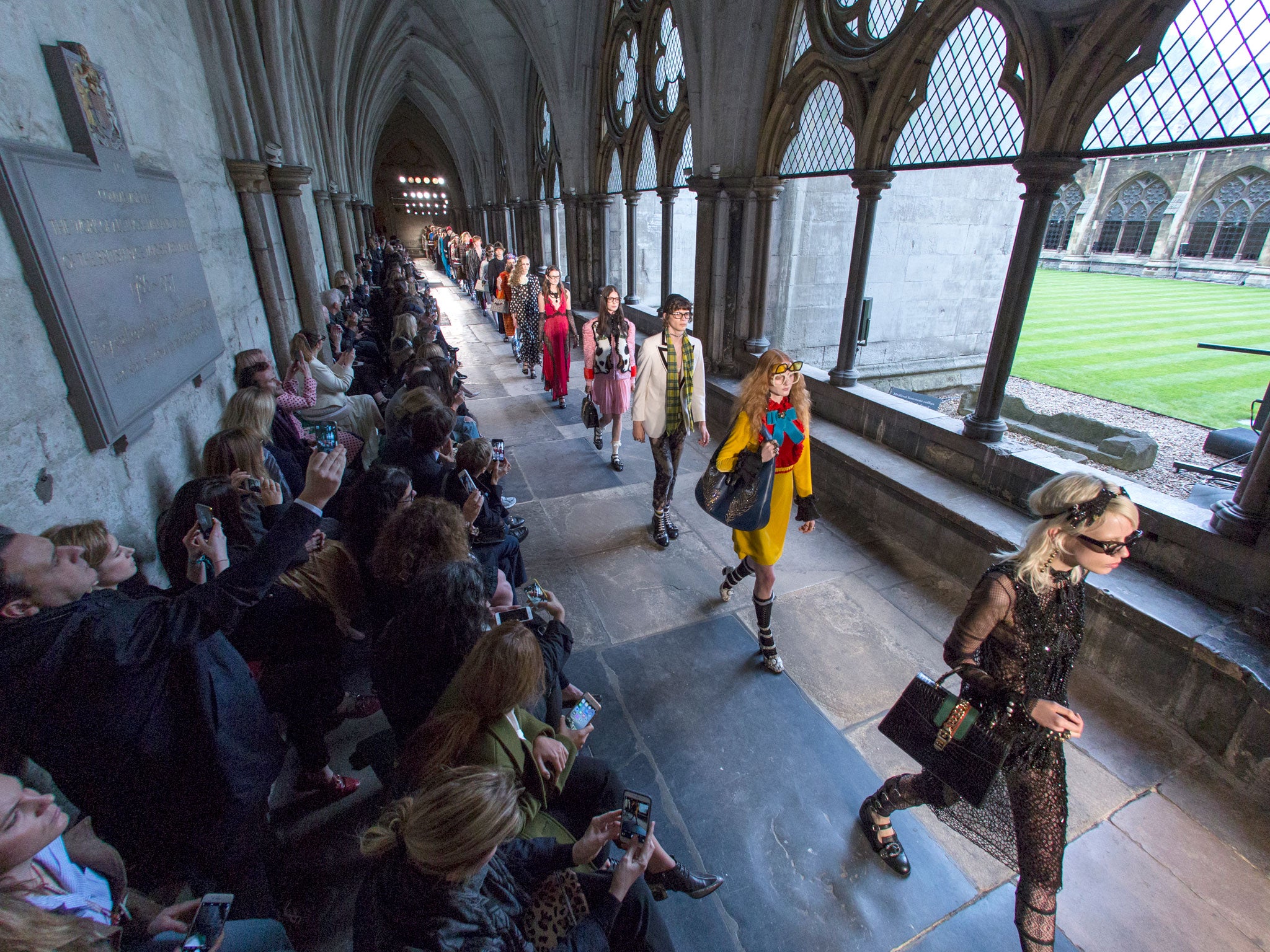
Palaces, abbeys, and… well, a shop on Mount Street. Those were the venues for a trio of fashion shows in stage in and around London this week, under leaden skies and pouring rain, ironically enough for the holiday-focussed interim season dubbed “Resort”. One was a home-grown brand – the Scottish designer Christopher Kane, who showed sensible coats and dowdy skirts, clumpy boots and frocks cut oddly into the shape of giant pansies, like the BFG’s herbaceous border crossed with Little Shop of Horrors. The other two, however, were global heavyweights: Christian Dior, who bogarted Blenheim Palace in Oxfordshire, and Gucci, who bagged Westminster Abbey.
That venue caused much consternation, and denunciation from the pulpit - Reverend Peter Owen-Jones, a priest, author and some-time television personality, dubbed Gucci’s show a “Disneyfication” of “traditional sacred spaces.” The show itself took space in the Cloisters of Westminster Abbey – not exactly a sacred space, but rather one adjacent, which can be hired to anyone with enough cash for seated dinners or drinks receptions. Gucci showed dresses, rather than plied us with alcohol. Is the latter somehow more holy than the former?
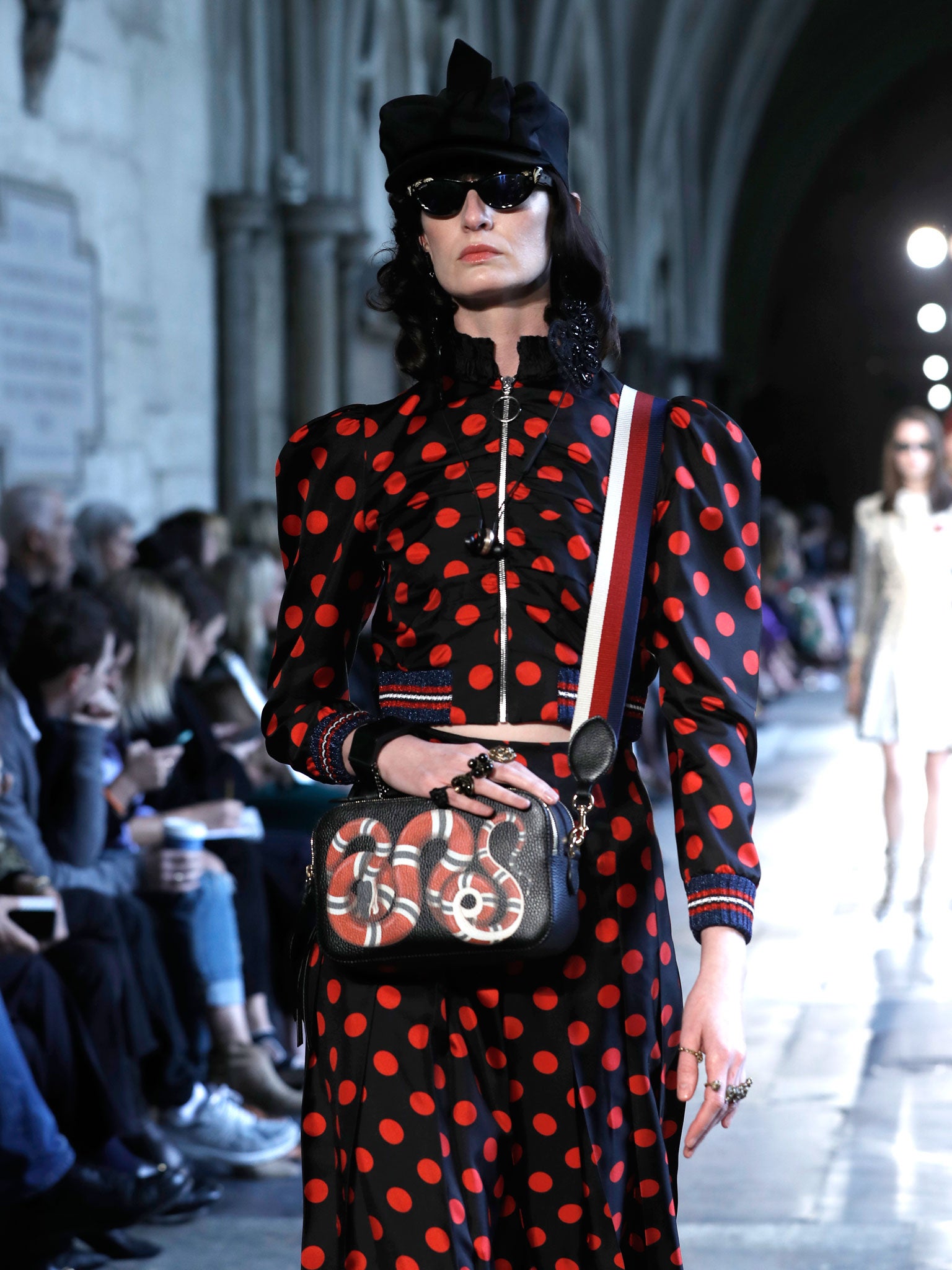
Perhaps in the eyes of an English Anglican, because to many fashion is still flim-flam, a vainglorious occupation focussed on exterior beauty and artifice, a sin. There’s a lingering Anglo-Saxon puritanism about the industry – would similar questions be posed if the Cloisters were used to host a multi-billion pound tech company’s corporate shindig?
But Gucci and Dior – and Kane’s parent conglomerate, Kering – are multi-billion pound enterprises. That’s the thing these kind of resort shows are devoted to demonstrating. The reason they chose to show here is simple – there’s money. London has the highest number of billionaires of any city in the world, according to a report by data provider Wealth Insight – 77. Those are only those resident, though, as London is also an enticing destination for well-heeled luxury shoppers. Coincidentally (or not) both Dior and Gucci unveiled re-workings of flagship stores on Bond Street, the priciest street in Europe where labels are expected to fork out around £838 per square foot a year (the Champs Elysées in Paris stands at just £536 per square foot). Both also booked out five-star hotels in the capital, filling them not only with press ready to admire (or, perhaps, admonish) but with clients eager to acquire.
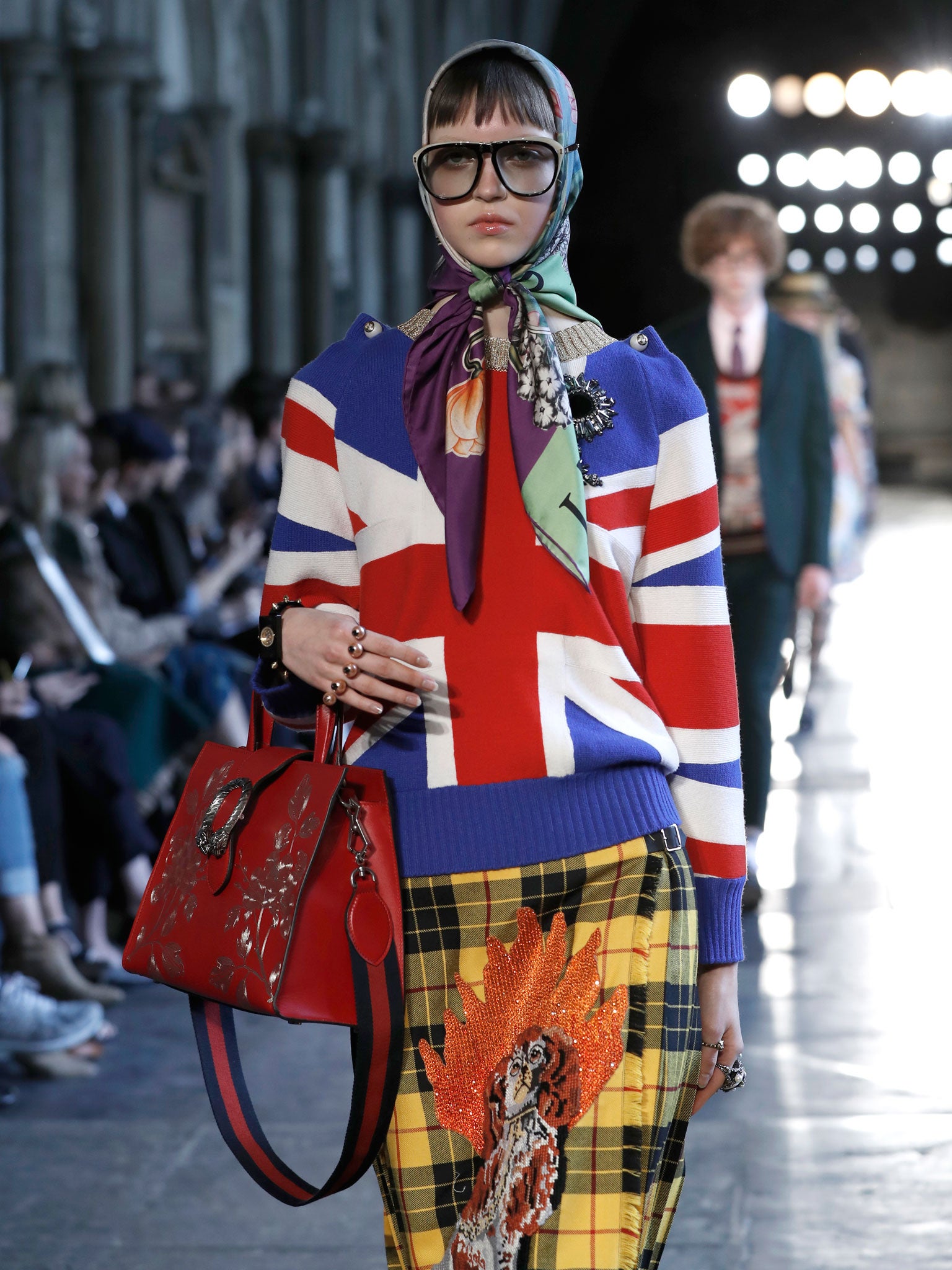
The peripatetic annual resort shows have a tendency to follow that formula. They also usually present clothes that are somehow a reflection of the place in which each house chooses to display, kind of like a “Wish You Were Here” post card. Wish you wore here? That can oscillate between the literal abstract – Raf Simons, for instance, imbued a 2014 resort show he presented while helming Dior with a sense of urbanity and freedom reflective of New York, where he chose to show. By contrast, when Karl Lagerfeld showed a Chanel collection in Shanghai he cut jackets like cheongsam and accessorised them with coolie hats.
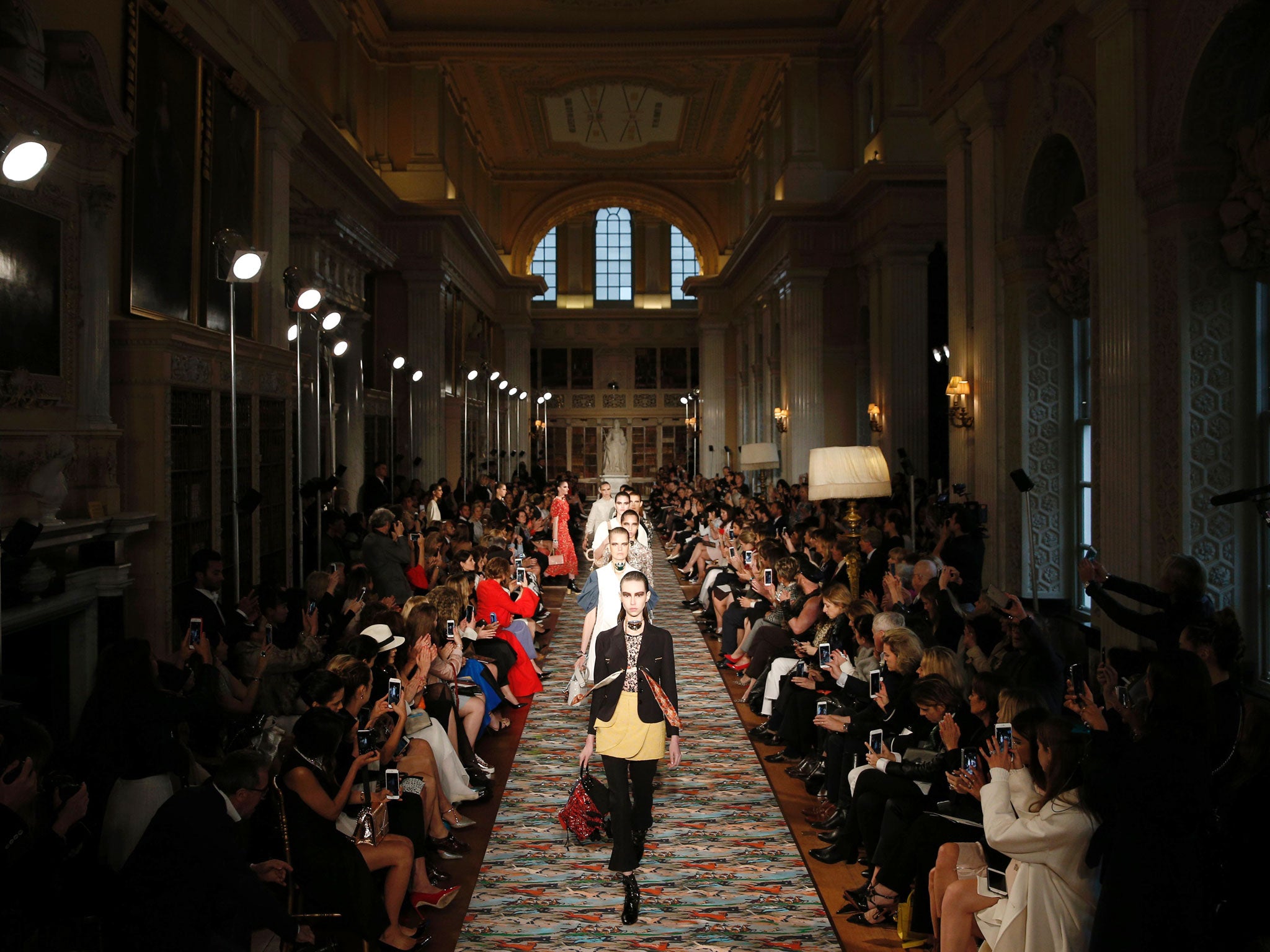
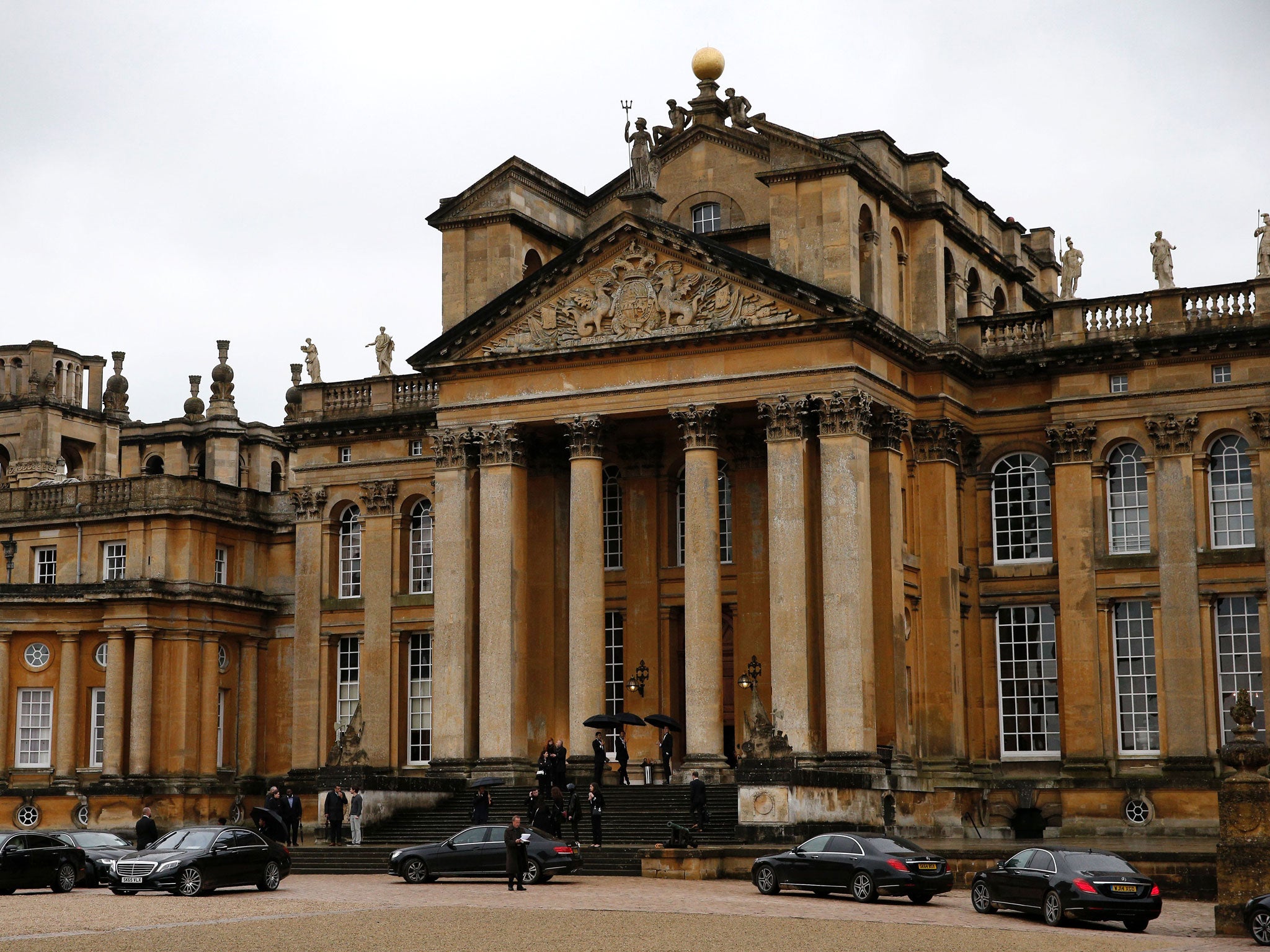
It’s strange to witness when you actually live there, and watch as the current Dior designers Lucie Meier and Serge Ruffieux march models through the Long Library of Blenheim palace, dressed in forties-style silk tea-dresses fit for the Mitford sisters, in chintzy prints mashed together with George Stubbs-ish hunting scenes, or tweeds loosely woven in heathery, heath-y colours. An abstract notion of the “English Eccentric” informed their mash-up of prints and silhouettes, a touch Edith Sitwell, stacked bracelets reminiscent of Nancy Cunard, all a bit dotty duchess in that well-established bohemian aristocrat mould.
In terms of Englishness, though, those had nothing on Alessandro Michele’s Gucci gear. If Dior’s allusions were the aforementioned abstract, Michele went literal and liberal, with stud-pimpled punk denim jackets, schoolgirl uniforms, public school boaters, Union Jack sweaters and tartan Miss Marple suits, models walking with handbags nestled in the crooks of their elbows. Their gait was distinctly unfashionable and not too dissimilar to her Majesty, a frequent guest of Westminster Abbey after all. “An homage to English people,” is how Michele described the collection, summarising his meshing of styles and sartorial mores as thus: “You can be punk and have a cup of tea.”
Obviously, it’s a picture-postcard version of Englishness – and hence, peopled with easily-read clichés. And yet, the Englishness helped this Michele collection to hang together more tightly than his previous offerings. That isn’t chauvinistic patriotism, merely a comment on how the locale seemed to focus Michele’s magpie eye, pulling his motifs from the mantlepieces of English stately homes (such as Staffordshire dog figurines in mink, needlepoint or plain embroidery), jacking up his shoes like Camden Town brothel-creepers, ringing rosies around his handbags and the necks of sweaters, and churning out a few ruffled gypsy-ish dresses that seemed like odes to Ossie Clarke and Bill Gibb. Or even John Galliano, whose ghost (bias) cut through the parade in gossamer polka-dot dresses. Of course, if he’d shown it in New York, maybe we would have seen these clothes with different eyes – his tiered lace frocks would have reminded you, kindly, of Shirley Temple, or less kindly of Bette Davis in her Baby Jane Hudson turn, as opposed to Richmal Crompton’s monstrous sugarplum Violet Elizabeth Bott. But he didn’t. And if we’re not looking on this with a cynical, Anglo-Saxon eye, you’d like to think Michele came to London not for the money, but to be inspired. “I didn’t imagine they would say yes,” he said, of staging the show at Westminster Abbey. “It’s as if you asked for Buckingham Palace! But I can dream… so why not?”
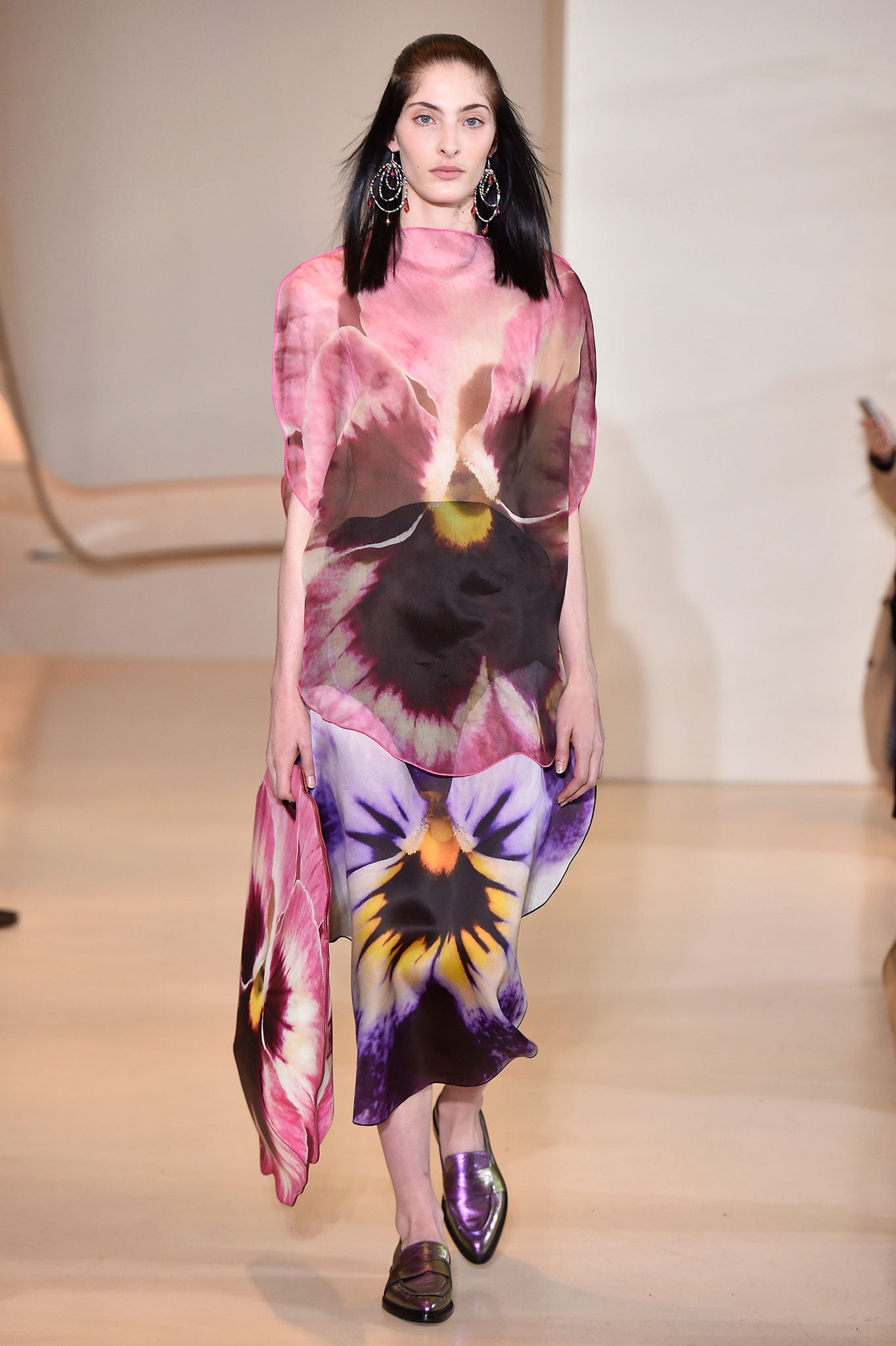
Bar the locale, little connected Gucci, Dior and Kane’s offerings for Cruise – besides, perhaps, a season-free feel that reflected both the characteristically British inclement weather (where a warm coat is often necessary in June), and the demands of a global luxury marketplace meaning that fur coats and summer dresses can coexist both on catwalks and in stores. The only proviso being that the clothes look – and are – expensive. Gucci and Dior both achieved that (Christopher Kane, less so). London may not seem as far flung as previous cruise locales – in the past month alone, press have been shuttered between the newly-opened port of Havana and the coast of Rio de Janeiro – but it does reflect the demands of contemporary fashion, and the demanding billionaires who populate this city like no place else.
There’s even more in town this week than normal, thanks to Dior and Gucci.
Join our commenting forum
Join thought-provoking conversations, follow other Independent readers and see their replies
Comments